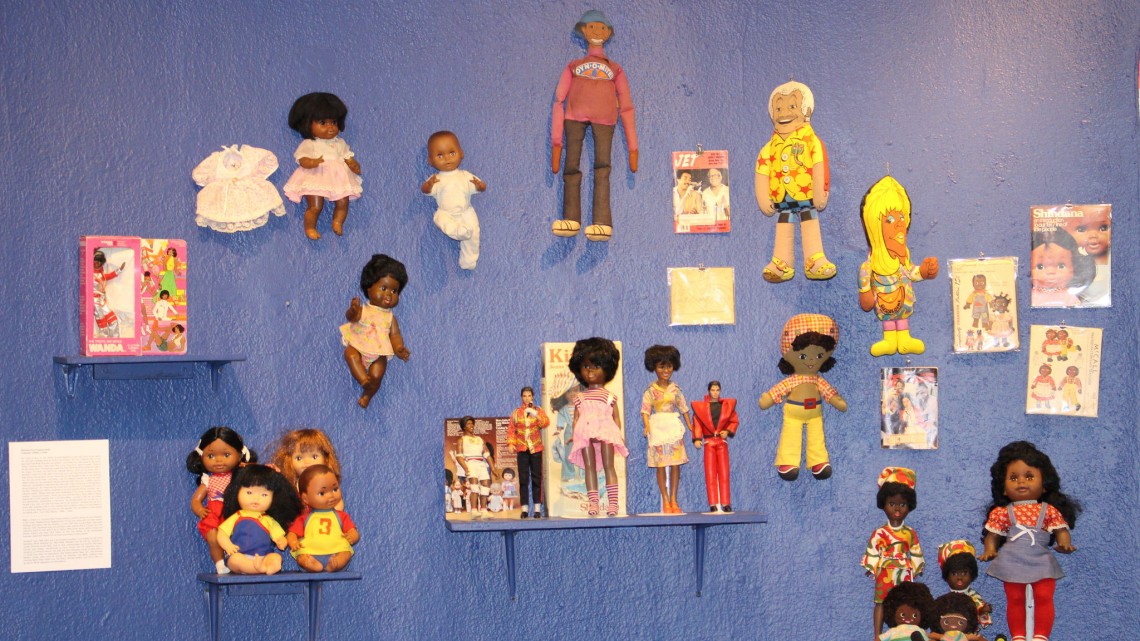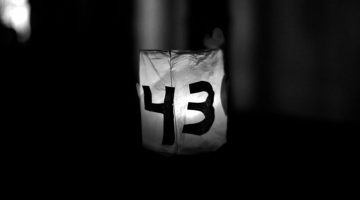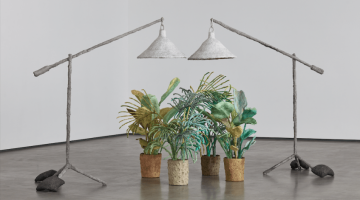“elevates copying to an art, but”1
In March, at Brown University, white conceptual poet Kenneth Goldsmith stood before an audience and read his new “poem,” which was actually Michael Brown’s autopsy report, slightly re-ordered. In October, in an article called “Something Borrowed” in The New Yorker, Alec Wilkinson, a white staff writer at that publication who was once a policeman, wrote about the “beleaguered” poet Kenneth Goldsmith and some of the “politically correct” and “resentful” people who are doing the beleaguering.
“Goldsmith, who is fifty-four, likes pranks and provocations and making people uncomfortable—challenging behavior, he thinks, is an artist’s prerogative,” Wilkinson writes. Goldsmith fits a certain idea of an artist that makes very good sense to people who are living well and comfortably in a 2015 America that seems to them to be working quite nicely, that celebrates the plucky individual, that believes, say, that intricate consumer choice is freedom, or that “an artist’s right to make a mistake is much more sacred than anyone’s feelings,” as Goldsmith is quoted as saying toward the end of the piece. Much more sacred, too, they might think, than a close examination of a young man’s dead body for the purpose of determining how exactly he died.
More sacred, maybe, than the desire of people who loved that young man to have some space or some silence or some entitlement around that text.
In Goldsmith’s view, it would seem, the artist is entitled to just about anything. Which is another way of saying that Goldsmith’s idea of an artist is as colonizer, and that The New Yorker (et al.) might share a worldview that is colonially confused on the definition of certain key words: borrowing, stealing, freedom, progress, savagery.
***
On view through November 21 at the William Grant Still Arts Center in Los Angeles is The West Adams Collectors Club: Collecting, Archiving and Exhibiting Your Own Cultural History. The exhibition is the result of an eight-week, intergenerational workshop on grassroots archiving and collecting. West Adams, where the William Grant Still Arts Center is located, is a neighborhood that was once segregated via race-based land-use covenants, that lost many Japanese American residents when they were interned during World War II, and where people are now struggling to maintain their homes and communities in the face of gentrification. The collections in the exhibit are by community members, professional archivists, and local historians.
Billie Green, a longtime resident of the neighborhood, shares her collection of dolls by the Shindana Toys company, founded in LA in the wake of the 1965 Watts Rebellion, which she started after attending a party for her granddaughter’s birthday in a tea house decorated with lots and lots of dolls, all but one of them white.
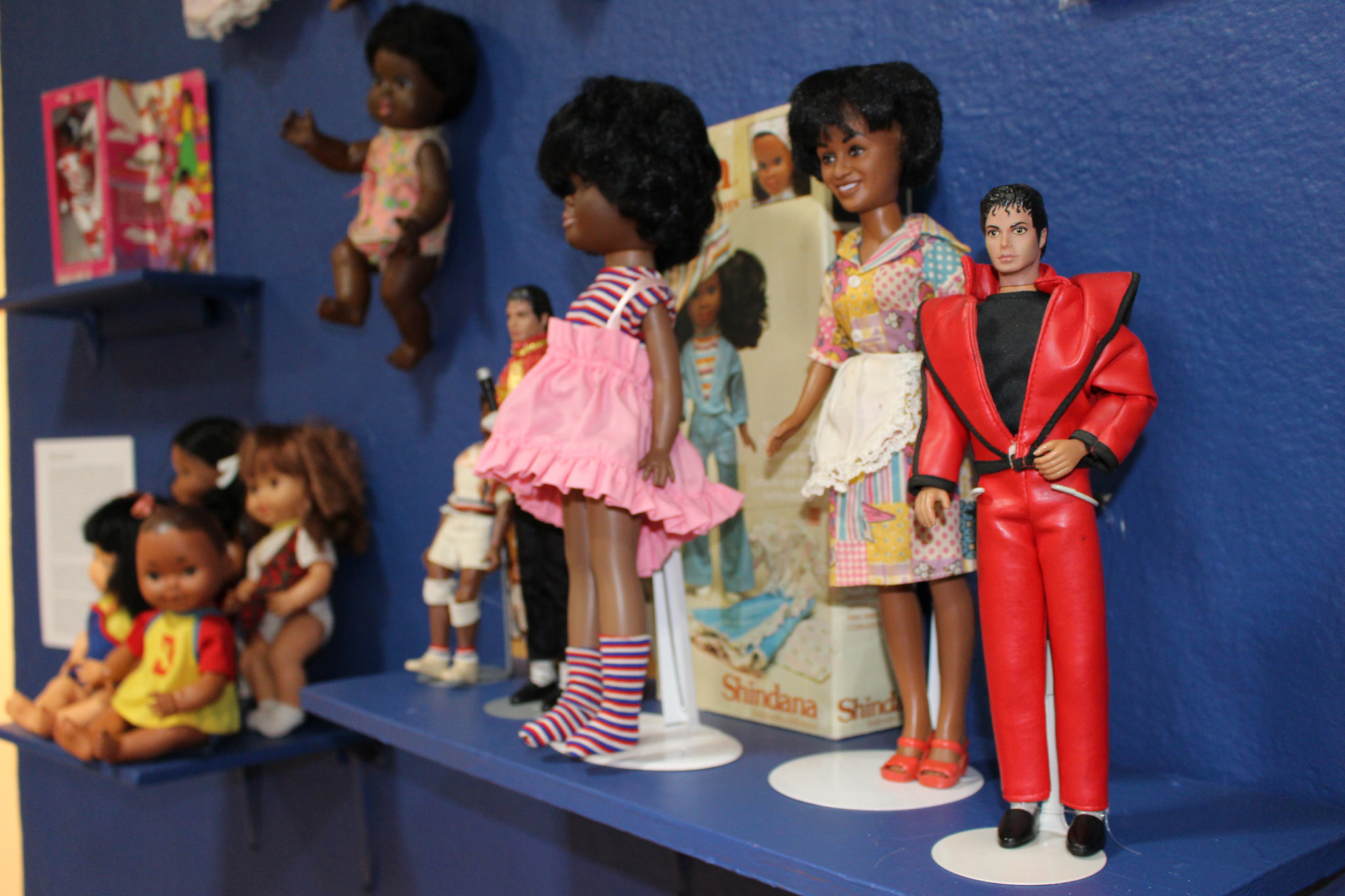
Installation view, The West Adams Collectors Club: Collecting, Archiving and Exhibiting Your Own Cultural History at the William Grant Still Arts Center, Los Angeles, 2015. Courtesy of the William Grant Still Arts Center.
In the West Adams Collectors Club exhibit, there is a wall devoted to ephemera of the neighborhood’s Trinity Baptist Church, and another to Alden Kimbrough’s first editions, newspaper clippings, and other materials by and about James Baldwin. Newspaper and magazine clippings are also prominent in C. Jerome Woods’s selections from his Black LGBT Project, especially featuring niche media coverage of local icons Sir Lady Java, a black trans performer who in the 1960s played a key role in bringing down LA’s law against “impersonat[ing] by means of costume or dress a person of the opposite sex,” and Jewel Thais-Williams, proprietor of Jewel’s Catch One, the local black-owned gay club that announced its closure after four decades this year. The baker Tené Harris’s collection uses recipes as an entry point into her family history and into the idea of cooking as a means of understanding legacy.
An entire room is devoted to Community Services Unlimited, Inc., which was created to serve as the nonprofit arm of the Southern California chapter of the Black Panther Party. Photographs and ephemera show the trajectory from the Panthers’ free breakfast program of the 1960s to CSU, Inc.’s current urban-gardening and food-justice programs. (There was produce for sale at the exhibition opening.) “Each item in this exhibit has a political significance in the history of the work of Community Services Unlimited, Inc. Our gaze on this history is not romantic, but it is respectfully critical and designed to hone our current trajectory,” reads the artist statement by CSU, Inc. Executive Director Neelam Sharma.
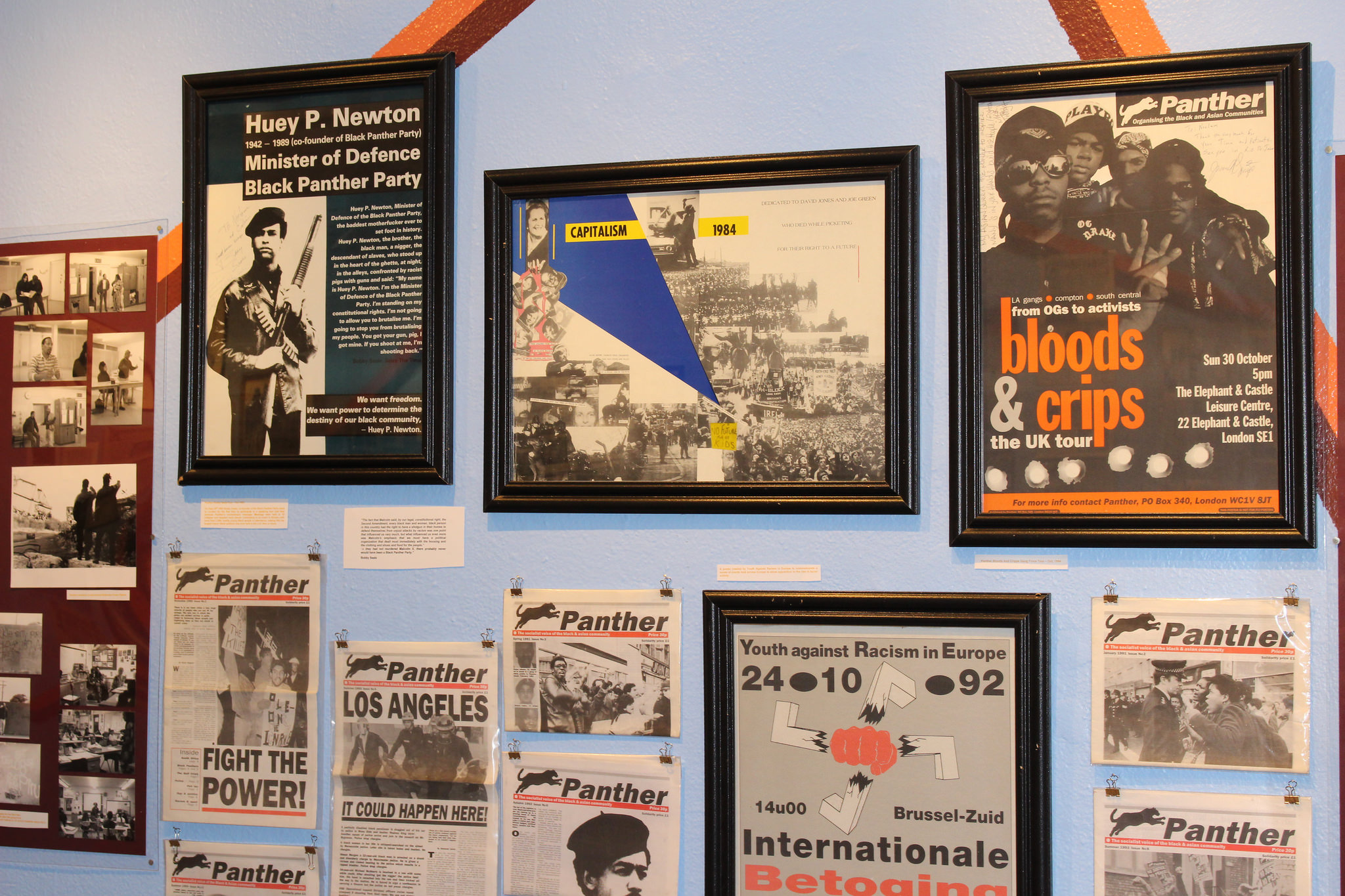
Installation view, The West Adams Collectors Club: Collecting, Archiving and Exhibiting Your Own Cultural History at the William Grant Still Arts Center, Los Angeles, 2015. Courtesy of the William Grant Still Arts Center.
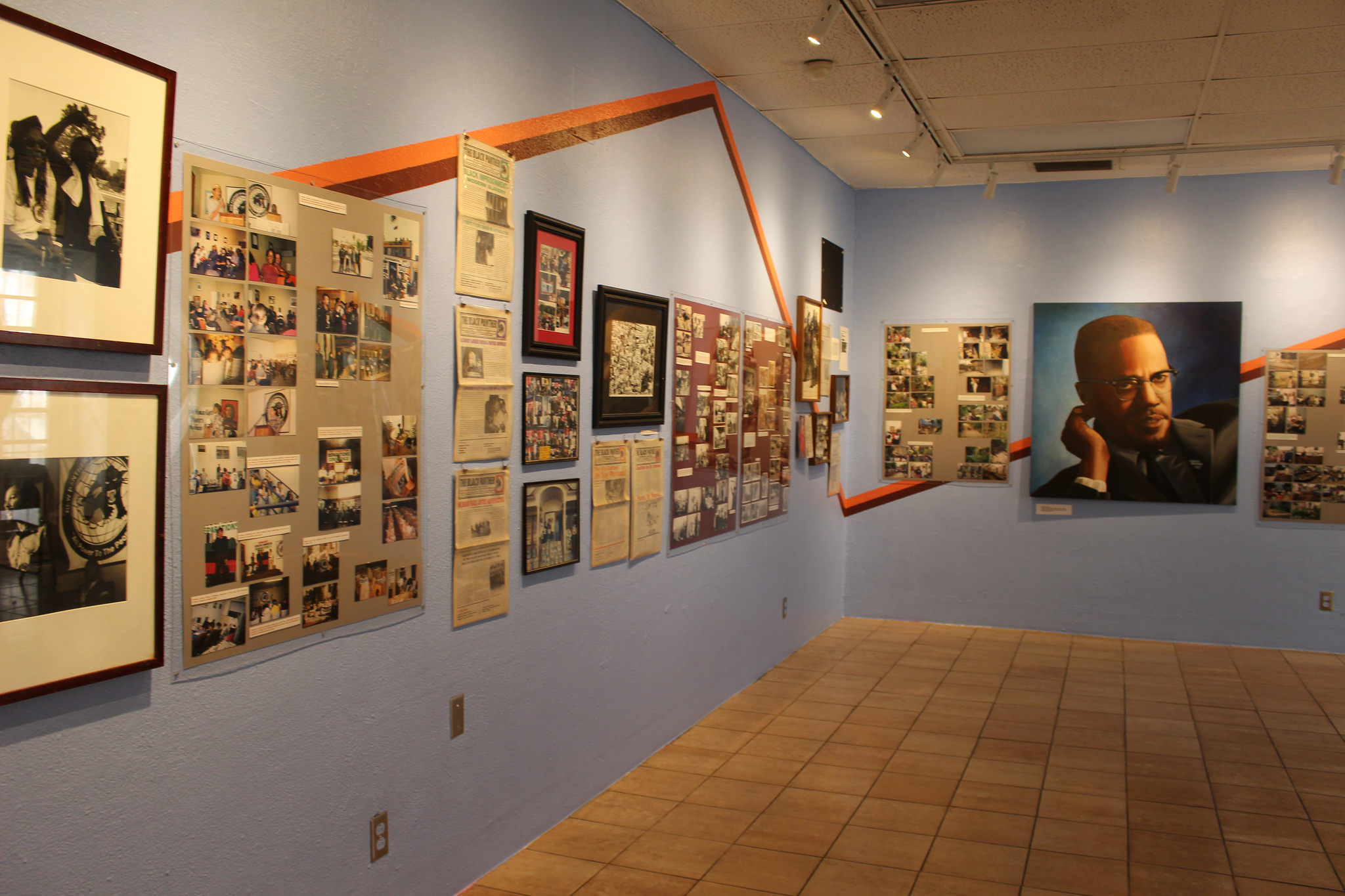
Installation view, The West Adams Collectors Club: Collecting, Archiving and Exhibiting Your Own Cultural History at the William Grant Still Arts Center, Los Angeles, 2015. Courtesy of the William Grant Still Arts Center.
Some of these collections have been housed in shoeboxes in people’s garages. Some have been solicited for institutionalization but have declined out of concern that the collections would get buried or become inaccessible to the communities from which they came. “This exhibit is one of our most diverse, but what connects all of the items are personal affinities in the vision of each collector’s archive, the majority of which are being presented for the first time,” it says on the wall.
(This is not to say that I don’t understand the concept or even to say there are lines one does not cross. Goldsmith’s “Day,” a copy of the New York Times of September 1, 2000, did the concept. And no one is Mao here. A critique that involves a realistic appraisal of the situation is a concept I find worth engaging. I use the term realistic here as opposed to colonial, which always ranges from delusional to deliberately deceptive although, through force, it often makes a terrible new real.)
In a two-bedroom apartment in Whittier, south of LA, Enrique Serrato lives in the midst of his 6,600-object art collection—one of the largest collections of Chicano art in the world. Since he was 16, the 74-year-old has been collecting art near where he’s lived.
I know these things because Emily Rappaport, a Mexico City–based writer, profiled Serrato on artsy.net a week before Alec Wilkinson’s piece on Kenneth Goldsmith appeared in The New Yorker.
“three avant-garde poets . . . drinking in a basement bar in Buffalo . . . decided to start a revolutionary poetry movement”2
Los Angeles’s Museum of Contemporary Art is under new leadership and is embarking on two new initiatives to connect to LA community, or communities, beyond the museum’s traditional spaces downtown. One of them is a gallery called “Storefront,” where actual storefront galleries from throughout the city will be selected to set up shop at the museum on a rotating basis. The other was initiated by the late painter Noah Davis: a collaboration between MOCA and Davis’s Underground Museum that will bring museum art from MOCA’s collection to the West Adams district, also on a rotating basis.
Further south in Leimert Park, the hub of Black Art in LA, rising art star Mark Bradford has returned to the neighborhood where he grew up to co-found, with the Hammer Museum, Art + Practice, a gallery, residency space, and program of arts education for young people in the foster-care system.
With spaces like the Brockman Gallery, which showed artists like Betye Saar, David Hammons, and John Outterbridge in the early days of their careers and the heady days of the Black Arts Movement, and the jazz and poetry crucible The World Stage, Leimert Park has been at the heart of Black Arts and culture in LA since the ‘70s. The neighborhood, which takes its name from white real-estate developer Walter H. Leimert, was master-planned in the 1920s as a whites-only neighborhood; as the realization of Mr. Leimert’s “perfect” suburb.
Today, Leimert Park is threatened by gentrification, with longtime arts spaces vulnerable to displacement in the face of rising property values and rents.
***
I do not think “social practice” and “community-based art” are the same thing. I do not think the latter term is really what I mean. I do not think “social practice” and “community-based art” are apt or adequate terms for art that comes from somewhere and knows it, for art that is rooted, for art that understands and maybe even finds sacred its connectedness.
Muriel Rukeyser’s poem “Islands” actually has three stanzas (it turns out; I just looked it up). I think about this poem a lot, but always only the first part. It goes:
Islands
O for god’s sake
they are connected
underneath
“There needs to be activism. There also needs to be art.”3
The white conceptual poet Vanessa Place has this project where she has been tweeting the entire text of Gone With the Wind, with a profile picture of Hattie McDaniel as Mammy in the film version of that novel. It has been met with loud critique. The LA Times asks, politely, “artistic expression or racism?” Vanessa Place responded to the critiques with a public statement that is a lot more complicated and engaged than anything Kenneth Goldsmith has said, and it does seem to indicate that she is attempting to be critically provocative about white supremacy in a way that she thinks is important for a white person to do, and it very explicitly connects appropriation to stealing, and yet . . .
Bhanu Kapil: “Vanessa Place, in person, has always been unfailingly kind, tender, funny—and great. I loved many of her initiating projects: the brilliant little blue book on failure, co-written with Rob Fitterman. Maybe I would read it differently now, but at the time I thought it was stunning. I taught La Medusa in a class on the city and the novel. I taught Dies: A Sentence. I thought Vanessa’s work with the mirror, the confession—the strict, fierce brilliance of the performances she gave—were: striking. [ . . . ] I was impressed by Vanessa’s stance/ mind. I thought, I understand. Her work is returning an audience’s—reaction—to itself. . .
So why now? Why, last night, when I saw the Mammy avatar sequence on Twitter for the first time, did the Russian-Indian vibe—the NO—come over me? Because, I think: it has been such an utterly shitty spring—when it comes to black bodies—”4
Vanessa Place and Kenneth Goldsmith both apologize for the “hurt” they have caused, for the people who have been “hurt” by their literary projects. This strikes me both as a fascinating and unexpected concern for people’s feelings in relation to an art form, or concept, that generally has a much tougher posture than that, and as a sort of diminishment, a lack of responsibility—“I’m sorry if I hurt your feelings . . .” Shrug.
***
I always come back to intersectional feminism (cite: Kimberlé Williams Crenshaw; roots: Combahee River Collective, Audre Lorde, Gloria Anzaldúa, Angela Davis, so many others). It is not about “including” the marginalized in an existing center that is based on concentrated power. It is about re-centering, not centering, multiple and different centers. It is not reductive or simplistic or censorious in the ways certain conceptual artists and prestigious publications would misunderstand/misrepresent any kind of challenge to their unbounded “freedom” (entitlement) as “resentful” “political correctness.” Actually it is a lot more complex and a lot more about freedom and a lot more avant-garde, even, if we can really think about “avant-garde” as the production of radical and experimental ideas and techniques beyond a very narrow legacy primarily located in the bodies of white men who perceive themselves to have no place meaning every place and (so strangely, really) defend their territory as a defense of freedom.
Copied and pasted from the Combahee River Collective Statement (1977): “If Black women were free, it would mean that everyone else would have to be free since our freedom would necessitate the destruction of all the systems of oppression.”
***
It is so simple I would think it goes without saying but apparently it does not? It is white artists who feel entitled to any text, any story, any provocation, any pain. It is a very different thing, in this context that we all are living in, for a white man to read a black man’s autopsy report as his own innovative poem than it is for a black woman to collect and display black dolls because her granddaughter’s birthday party was full of white ones.
Or: white supremacy is real. Art is not located somewhere separate from it.
“How I make my way through this thicket of information—how I manage it, how I parse it, how I organize and distribute it—is what distinguishes my writing from yours.”5
I am thinking about what Kenneth Goldsmith is famous for and what might be interesting about that work. (Oh, I know, he doesn’t care. “He likes to say that he is ‘the most boring writer who ever lived,’” Wilkinson writes.)
There is a show I have not seen, but I keep thinking about its title, or the image of it I saw on Instagram: from May to July in Athens, Greek artist Dimitris Dokatzis showed new works in an exhibition called Activism is Poetry in Full Swing.
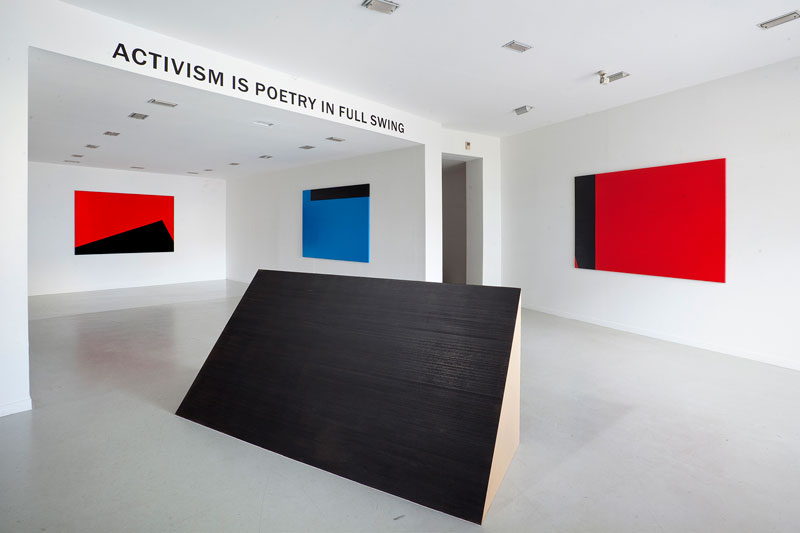
Installation view, Activism is poetry in full swing, Dimitris Dokatzis at Qbox Gallery, Athens, 2015. Courtesy of Qbox Gallery.
The activist/philosopher Grace Lee Boggs and the filmmaker Chantal Akerman died this week (October 5th, 2015).
Grace Lee Boggs, who made it to 100 years old and was active in the Black Power movement and a loving swell of community-based social and economic transformation in Detroit, talked about work
to transform societies from hierarchy, exploitation, and violence to justice and sustainability as “people exercising their creativity in the midst of devastation.” Chantal Akerman showed, on film, how deeply interesting and relevant it is, a woman cleaning a bathtub, a woman making coffee, a woman walking down a hall in her home—
***
Kenneth Goldsmith began his career as a visual artist before sidling over to poetry. At the end of Wilkinson’s “Something Borrowed,” Goldsmith says, “Sometimes I think I might be headed back to the art world . . . They still seem to like me there.”
Some words the meaning of which it might be interesting for the art world to think more about instead of just appropriate: sacred, freedom, ownership, hurt, here and there—place.
1) Quoted from Alec Wilkinson, “Something Borrowed,” The New Yorker, October 5, 2015.
2) Ibid.
3) Vanessa Place, interviewed in Rich Smith, “Vanessa Place Is in a Fight Over Gone with the Wind’s Racism, But It’s Not the Fight She Says She Wants,” The Stranger, May 21, 2015.
4) Bhanu Kapil, in a blog post from May 14, 2015: Vanessa Place, The Mongrel Coalition and Sector 17: Notes on Poetry, Violence and Community.
5) Kenneth Goldsmith, quoted in ibid.
